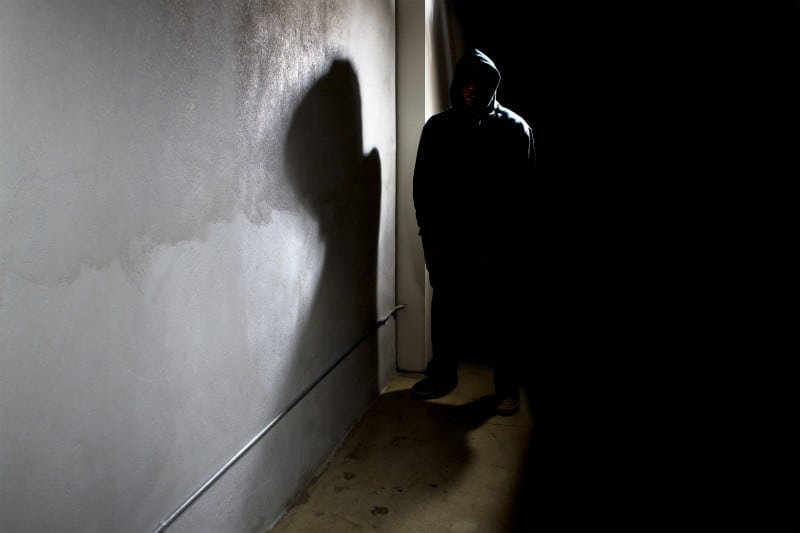“Who knows what evil lurks in the hearts of men?”
Table of Contents
ToggleThis famous line was created for the 1930’s era pulp drama “The Shadow”, and was always followed by the answer “The Shadow knows!” While those days are bygone, the specter of hidden behavior is not, and unless you remain diligent its effects will sooner or later present themselves in a variety of ways in your business.
Such ‘hidden’ behavior exists everywhere there are people; it is an inevitable extension of group dynamics. Put people together, and there will always be those that engage in activities that are not aligned with some level of rules that have been established. I use the term ‘rules’, but actually refer to anything from informal moral expectations to formal regulations, laws and processes. Put more simply, anytime you have rules you eventually have rule breakers.
We all know this phenomenon exists, though most – mainly because it is a given in society – do not spend much time thinking about it. Each of us in the workforce can no doubt pretty readily think of an example we observed recently, which of course makes perfect sense in that it is there we spend the majority of our time in an “organized” setting (i.e., one in which a semi-static group has common rules to follow). Some years ago I realized that some of the ‘hidden’ behavior in such settings is not restricted to individuals, but actually becomes shared by a sub-group over time; it is this ‘organized’ behavior I am speaking of.
Hiding in the Shadows
While I have no doubt those in behavioral sciences have their own way of describing it, the label I have given to this conduct is shadow processes. Having introduced the concept in a previous post, I defined them as “the activities people perform instead of an actual process that is (at least perceived to be) too cumbersome, restrictive or bureaucratic”; here I want to expand on the concept a bit further.
Let’s start by considering the impetus. As stated, a shadow process typically establishes itself when an approved process an organization expects to be followed is in some way considered to be unworkable by some (or even all) of those expected to comply with it. Why? This is the point when I would normally provide an analogy to illustrate why this might occur; in this case however, I believe most of you already know…
Ever eat at your desk – even though the policy is to not do that? Go against the company dress code? Take home office supplies? Cheat on a diet (test/metrics/partner)? Turn on red, even though the sign said not to? Water your grass when it was not your day, break curfew, exceed the speed limit, download a song you didn’t pay for, or any of countless similar actions?
Okay then: Why did you do that? The myriad answers to that question will be the same ones that explain why shadow processes come to be. Understanding this is a key first step, since if you grasp this you should also understand the natural corollary: you really cannot prevent such behavior, you can only mitigate it. This too is something we, as a society, recognize; it is the reason we have not only laws, regulations, policies, processes, etc., but also police, courts, auditors, regulatory agencies, and all of the other mechanisms for addressing non-conforming behavior when it occurs. We should never assume having a rule in place to be enough to ensure compliance to that rule; that way lies disappointment – or worse.
Working in the Shadows
Of course, non-conforming behavior is only part of the equation. There are several other elements that need to be present before we consider such behavior to constitute a shadow process:
- The behavior will be organized, rather than taking place in singular random events (remember that a process is a set of related activities intended to produce an expected outcome).
- The activities will be relatively consistent, but they will not be formalized; put another way, people will perform these activities repeatedly, but won’t acknowledge them ‘in public’.
- The activities will result in (at least the appearance of) the same outcome as the approved process.
Take special note of that last bullet, because it is the reason that a shadow process can remain in place, sometimes for years, undetected by the business and many regular measures intended to recognize non-compliance. Because the outcome seems to be what is expected, the results may go unquestioned – until a detailed audit, incident, or other condition finally brings the shadow process activities to light.
Note also that when I state the behavior will be organized, I mean that if you wrote it down it would look like a process. That should be expected, because it is a process – just not the one the business has approved.
Dispelling Shadows
By their very nature, shadow processes represent hidden activities. The degree to which they are hidden varies widely; they can be quite thinly veiled, or be covered in Stygian darkness and guarded like a secret society. So what are some ways to uncover them?
One way is a relatively recent business practice: social media. People – being people – share things in social media, often things that they would not consider sharing otherwise, so watch any relevant channels. We love to commiserate, and we often do that when discussing corporate policies and practices.
Another thing to watch for will probably seem counterintuitive: watch your metrics for any groups that are statistically better than others supposedly following the same process. Yes, better. Why? Because if everyone is following the same process yet some groups (or people) seem to be producing significantly (again, statistically) better results, chances are good that everyone is in fact not following the same process. Most compliance metrics are designed to highlight negative findings; the tendency when seeing better results is to simply say “Why can’t the rest of you do this!” My advice is you take such results with a proper pinch of salt, and find out how they are being achieved before accepting they are as good as they appear.
Overall, the best way to uncover shadow processes is to assume they are there, allowing you to prepare the proper light source to allow you to shine to dispel them.
Not all Shadows Are Bad…
Having outlined a lot of things that sound bad – because they often are – here is something you might not expect about this practice: shadow processes are not always negative. Sometimes those working in the shadows are actually doing the right thing (just like Batman); they can in fact be calling out approved processes that are actually detrimental to the business. The key to ensuring these positive practices do not remain hidden is to make certain your organization has embraced continual service improvement at a cultural level. People will not feel they need to hide activities if they know that by sharing them they will be given fair consideration and adopted (quickly) when they are truly improvements. No one should be content to be a ‘shadow puppet’, unwilling to challenge an approved process that should be changed – but the business has to be sure people are not made to feel they need to be vigilantes.
Who knows what shadows lurk behind your processes? YOU should know! Grab a light – and happy hunting….





